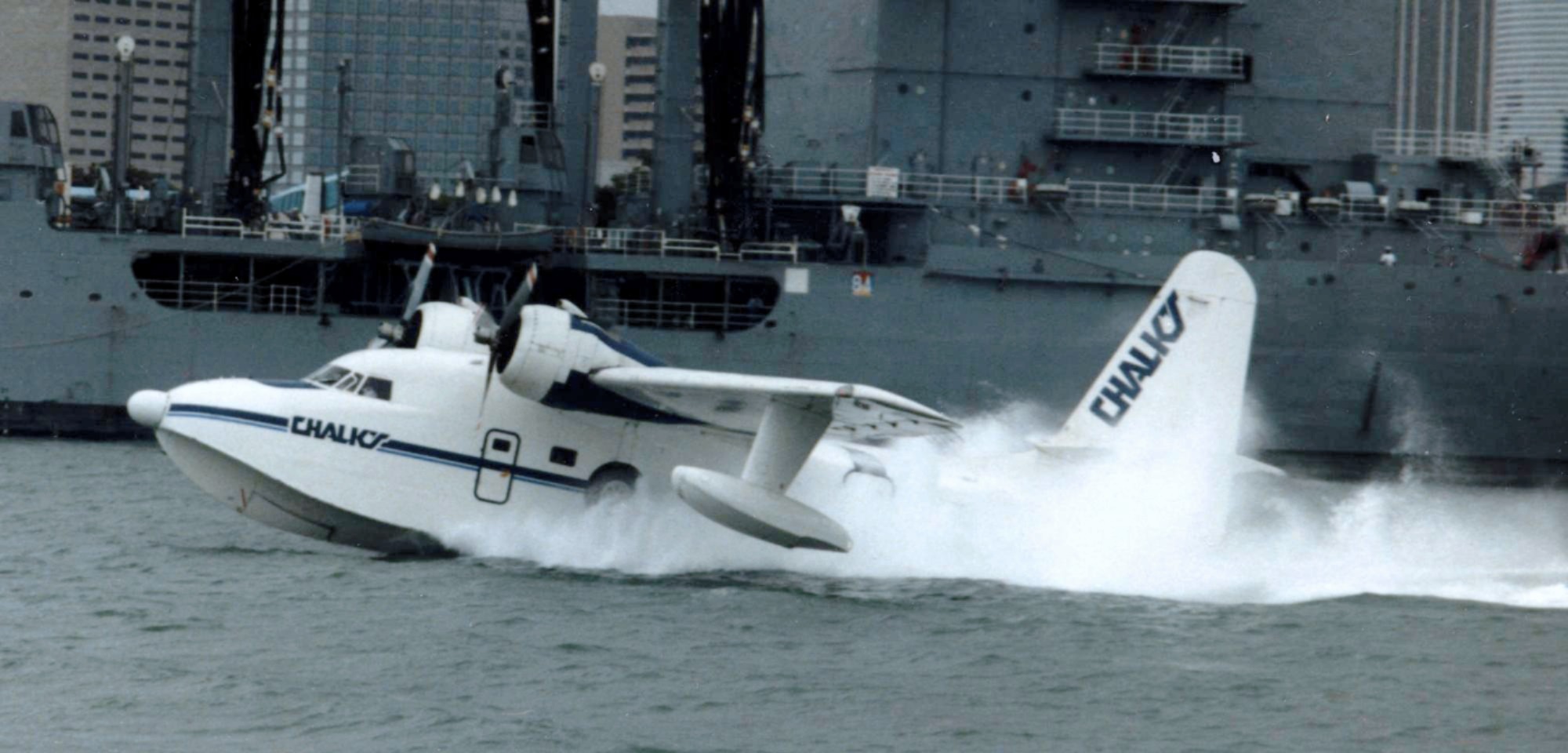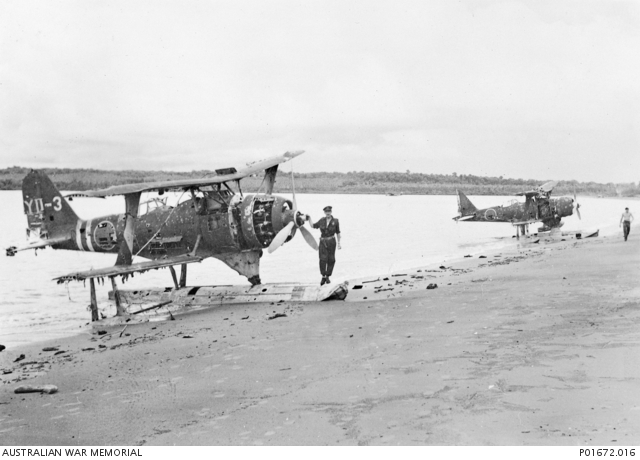|
R-Area Air Force
was a unit of the Imperial Japanese Navy Air Service (IJNAS) during the Pacific War that was involved in the Guadalcanal Campaign and Solomon Islands Campaign. The unit operated seaplanes with a primary mission to protect resupply convoys headed for Guadalcanal and to conduct aerial reconnaissance. History The R-Area Air Force was created by the 8th Fleet on 28 August 1942 in response to the Allied landing at Guadalcanal a few weeks earlier. It exclusively operated seaplanes in order to compensate for the lack of land bases in the Solomon Islands area. The unit's primary strength was drawn from the 11th Seaplane Tender Division, whose commander Rear Admiral Takatsugu Jōjima also became the commander of the R-Area Air Force. The squadrons from the division's four seaplane tenders ( ''Chitose'', ''Kamikawa Maru'', ''Sanyō Maru'' and ''Sanuki Maru'') formed two air groups. Eventually, aircraft from other squadrons also joined the R-Area Air Force, such as from ''Kunikawa ... [...More Info...] [...Related Items...] OR: [Wikipedia] [Google] [Baidu] |
Empire Of Japan
The also known as the Japanese Empire or Imperial Japan, was a historical nation-state and great power that existed from the Meiji Restoration in 1868 until the enactment of the post-World War II 1947 constitution and subsequent formation of modern Japan. It encompassed the Japanese archipelago and several colonies, protectorates, mandates, and other territories. Under the slogans of and following the Boshin War and restoration of power to the Emperor from the Shogun, Japan underwent a period of industrialization and militarization, the Meiji Restoration, which is often regarded as the fastest modernisation of any country to date. All of these aspects contributed to Japan's emergence as a great power and the establishment of a colonial empire following the First Sino-Japanese War, the Boxer Rebellion, the Russo-Japanese War, and World War I. Economic and political turmoil in the 1920s, including the Great Depression, led to the rise of militarism, nat ... [...More Info...] [...Related Items...] OR: [Wikipedia] [Google] [Baidu] |
Seaplanes
A seaplane is a powered fixed-wing aircraft capable of taking off and landing (alighting) on water.Gunston, "The Cambridge Aerospace Dictionary", 2009. Seaplanes are usually divided into two categories based on their technological characteristics: floatplanes and flying boats; the latter are generally far larger and can carry far more. Seaplanes that can also take off and land on airfields are in a subclass called amphibious aircraft, or amphibians. Seaplanes were sometimes called ''hydroplanes'', but currently this term applies instead to motor-powered watercraft that use the technique of hydrodynamic lift to skim the surface of water when running at speed. The use of seaplanes gradually tapered off after World War II, partially because of the investments in airports during the war but mainly because landplanes were less constrained by weather conditions that could result in sea states being too high to operate seaplanes while landplanes could continue to operate. In the 21 ... [...More Info...] [...Related Items...] OR: [Wikipedia] [Google] [Baidu] |
New Georgia Sound
New Georgia Sound is the sound in the New Georgia Islands region that runs approximately southeast–northwest through the middle of the Solomon Islands archipelago in the Southern Pacific Ocean and Melanesia.Map of the Solomon Islands archipelago (a better map). Geography The sound is bounded by Choiseul Island, , and to the north, and by |
Japanese Seaplane Tender Sanuki Maru (1939)
''Sanuki Maru'' (''Japanese'':讃岐丸) was a 1939-built cargo ship, requisitioned as a seaplane tender by the Imperial Japanese Navy during World War II. History She was laid down on 29 August 1938 at the Nagasaki shipyard of Mitsubishi Shipbuilding & Engineering for the benefit of the Nippon Yusen K.K. and launched on 8 February 1939. She was the 2nd of seven ships of the ''Sakito Maru''-class of high speed transports: '' Sakito Maru'' (崎戸丸), ''Sado Maru'' (佐渡丸), ''Sagami Maru'' (相模丸), ''Sagara Maru'' (相良丸), ''Sasako Maru'' (笹子丸), and ''Sakura Maru'' (佐倉丸). On 1 May 1939, she was completed and she made several journeys including one to London. On 17 August 1941, she was requisitioned by the Imperial Japanese Navy and began conversion as a seaplane tender. She was fitted with two 150-mm/45 caliber single mount guns, two 80-mm single mount guns, and two 13.2-mm single mount machine guns. Work was completed on 5 September 1941 and she was regi ... [...More Info...] [...Related Items...] OR: [Wikipedia] [Google] [Baidu] |
Japanese Seaplane Tender Kamikawa Maru
was a seaplane tender in the Imperial Japanese Navy (IJN). The ship was initially built at Kawasaki's Kōbe Shipyard and launched on 13 December 1936 as a merchant vessel for the Kawasaki Kisen K. K. Line. On 18 September 1937 the IJN requisitioned her as an aircraft transport ship and she was refitted in 1939 as a seaplane tender. The ship subsequently saw service in the Second Sino-Japanese War and the Pacific Campaign of World War II. On May 29, 1943, ''Kamikawa Maru'' was torpedoed and sunk by the submarine approximately northwest of Kavieng Kavieng is the capital of the Papua New Guinean province of New Ireland and the largest town on the island of the same name. The town is located at Balgai Bay, on the northern tip of the island. As of 2009, it had a population of 17,248. Kavi ..., New Ireland at . References * * * 1936 ships Ships sunk by American submarines Kamikawa Maru-class seaplane tenders Ships of the Kawasaki Kisen Ships built by Kawasaki He ... [...More Info...] [...Related Items...] OR: [Wikipedia] [Google] [Baidu] |
Japanese Aircraft Carrier Chitose
was a warship of the Imperial Japanese Navy that served from 1938 to 1944, seeing service as a seaplane carrier and later as a light aircraft carrier during World War II. In her initial guise as a seaplane carrier, she first saw service during the Second Sino-Japanese War in 1938, and subsequently played a key role in the Imperial Japanese Navy's development of a network of seaplane bases on the islands of the Pacific Ocean. After the outbreak of World War II in the Pacific, she took part in the Philippines campaign, the Dutch East Indies campaign, the Battle of Midway, and the Guadalcanal campaign, during which she was damaged in the Battle of the Eastern Solomons and also saw service related to the Battle of Cape Esperance. ''Chitose'' was converted into a light aircraft carrier during 1943, and subsequently took part in the Battle of the Philippine Sea and the Battle of Leyte Gulf. She was sunk in the Battle off Cape Engaño, one of several actions that made up the Battle ... [...More Info...] [...Related Items...] OR: [Wikipedia] [Google] [Baidu] |
Rear Admiral
Rear admiral is a senior naval flag officer rank, equivalent to a major general and air vice marshal and above that of a commodore and captain, but below that of a vice admiral. It is regarded as a two star " admiral" rank. It is often regarded as a two-star rank with a NATO code of OF-7. The term originated in the days of naval sailing squadrons and can trace its origins to the Royal Navy. Each naval squadron was assigned an admiral as its head, who commanded from the centre vessel and directed the squadron's activities. The admiral would in turn be assisted by a vice admiral, who commanded the lead ships that bore the brunt of a battle. In the rear of the squadron, a third admiral commanded the remaining ships and, as this section was considered to be in the least danger, the admiral in command of it was typically the most junior. This has continued into the modern age, with rear admiral the most junior admiralty of many navies. In most European navies, the equivalent ran ... [...More Info...] [...Related Items...] OR: [Wikipedia] [Google] [Baidu] |
Solomon Islands
Solomon Islands is an island country consisting of six major islands and over 900 smaller islands in Oceania, to the east of Papua New Guinea and north-west of Vanuatu. It has a land area of , and a population of approx. 700,000. Its capital, Honiara, is located on the largest island, Guadalcanal. The country takes its name from the wider area of the Solomon Islands (archipelago), which is a collection of Melanesian islands that also includes the Autonomous Region of Bougainville (currently a part of Papua New Guinea), but excludes the Santa Cruz Islands. The islands have been settled since at least some time between 30,000 and 28,800 BCE, with later waves of migrants, notably the Lapita people, mixing and producing the modern indigenous Solomon Islanders population. In 1568, the Spanish navigator Álvaro de Mendaña was the first European to visit them. Though not named by Mendaña, it is believed that the islands were called ''"the Solomons"'' by those who later r ... [...More Info...] [...Related Items...] OR: [Wikipedia] [Google] [Baidu] |
Japanese Seaplane Base Rekata Bay Under Attack 8-1943
Japanese may refer to: * Something from or related to Japan, an island country in East Asia * Japanese language, spoken mainly in Japan * Japanese people, the ethnic group that identifies with Japan through ancestry or culture ** Japanese diaspora, Japanese emigrants and their descendants around the world * Japanese citizens, nationals of Japan under Japanese nationality law ** Foreign-born Japanese, naturalized citizens of Japan * Japanese writing system, consisting of kanji and kana * Japanese cuisine, the food and food culture of Japan See also * List of Japanese people * * Japonica (other) * Japonicum * Japonicus This list of Latin and Greek words commonly used in systematic names is intended to help those unfamiliar with classical languages to understand and remember the scientific names of organisms. The binomial nomenclature used for animals and plants i ... * Japanese studies {{disambiguation Language and nationality disambiguation pages ... [...More Info...] [...Related Items...] OR: [Wikipedia] [Google] [Baidu] |
F1M Seaplanes At Rekata Bay 1943
The Mitsubishi F1M ( Allied reporting name "Pete") was a Japanese reconnaissance floatplane of World War II. It was the last biplane type of the Imperial Japanese Navy, with 944 built between 1936 and 1944. The Navy designation was "Type Zero Observation Seaplane" (零式水上観測機). Design and development In 1934, the Imperial Japanese Navy issued a specification to Mitsubishi, Aichi and Kawanishi for a replacement for its Nakajima E8N floatplanes, which were used for short-ranged reconnaissance and observation missions from the Navy's warships.Francillon 1970, p. 358. Mitsubishi's design, the Ka-17, given the short system designation F1M1 by the Japanese Navy, was a small all-metal biplane powered by a single Nakajima Hikari 1 radial engine rated at , the same engine as used by Aichi's competing F1A. It had elliptical wings and great care had been taken to reduce drag, with the number of interplane struts and bracing wires minimised. The first of four F1M1s flew in June 1 ... [...More Info...] [...Related Items...] OR: [Wikipedia] [Google] [Baidu] |
A6M2-NFloatZero
The Mitsubishi A6M "Zero" is a long-range carrier-based fighter aircraft formerly manufactured by Mitsubishi Aircraft Company, a part of Mitsubishi Heavy Industries, and was operated by the Imperial Japanese Navy from 1940 to 1945. The A6M was designated as the , or the Mitsubishi A6M Rei-sen. The A6M was usually referred to by its pilots as the ''Reisen'' (, zero fighter), "0" being the last digit of the imperial year 2600 (1940) when it entered service with the Imperial Navy. The official Allied reporting name was "Zeke", although the name "Zero" (from Type 0) was used colloquially as well. The Zero is considered to have been the most capable carrier-based fighter in the world when it was introduced early in World War II, combining excellent maneuverability and very long range.Hawks, Chuck"The Best Fighter Planes of World War II" chuckhawks.com. Retrieved: 18 January 2007. The Imperial Japanese Navy Air Service (IJNAS) also frequently used it as a land-based fighter. In ear ... [...More Info...] [...Related Items...] OR: [Wikipedia] [Google] [Baidu] |






